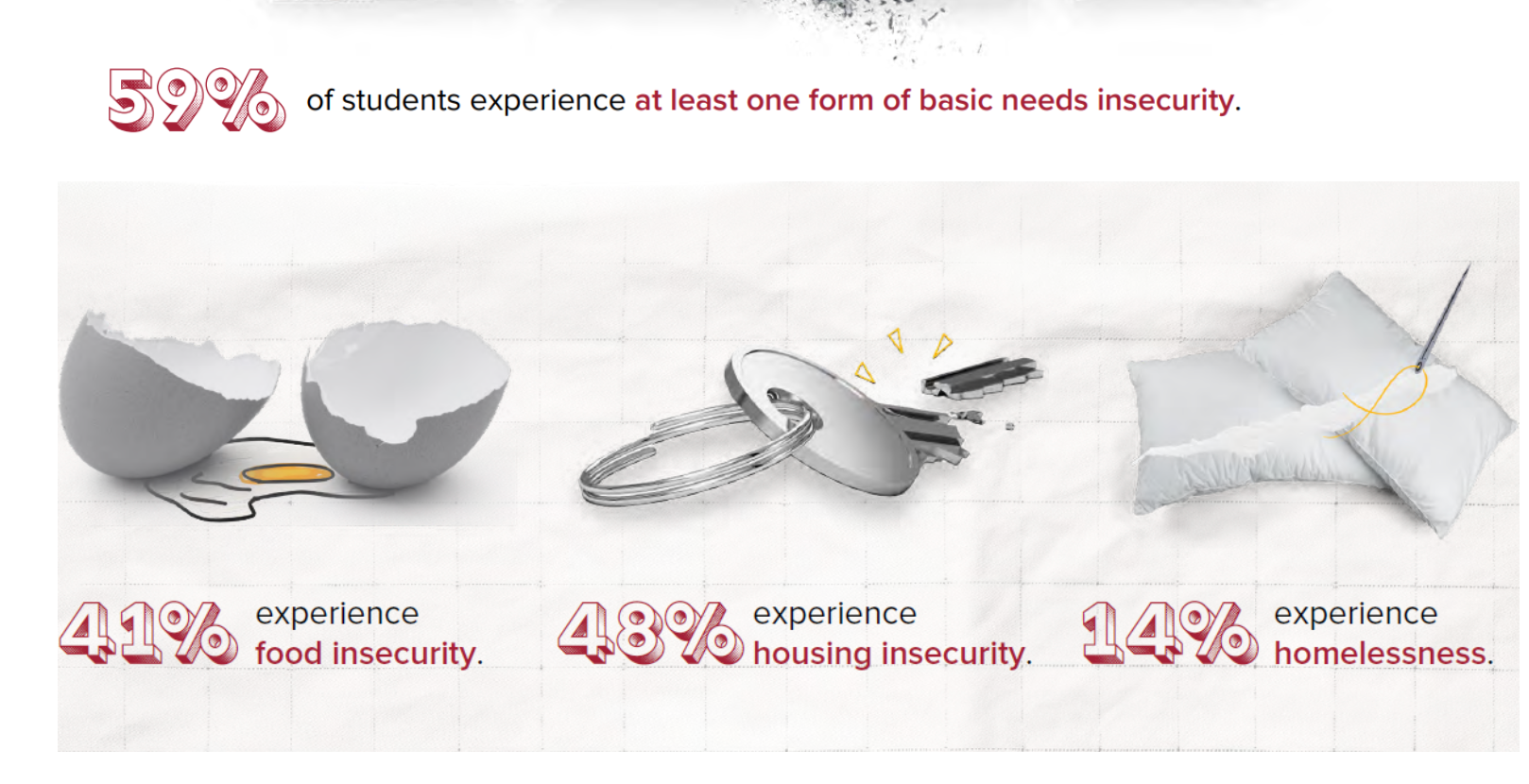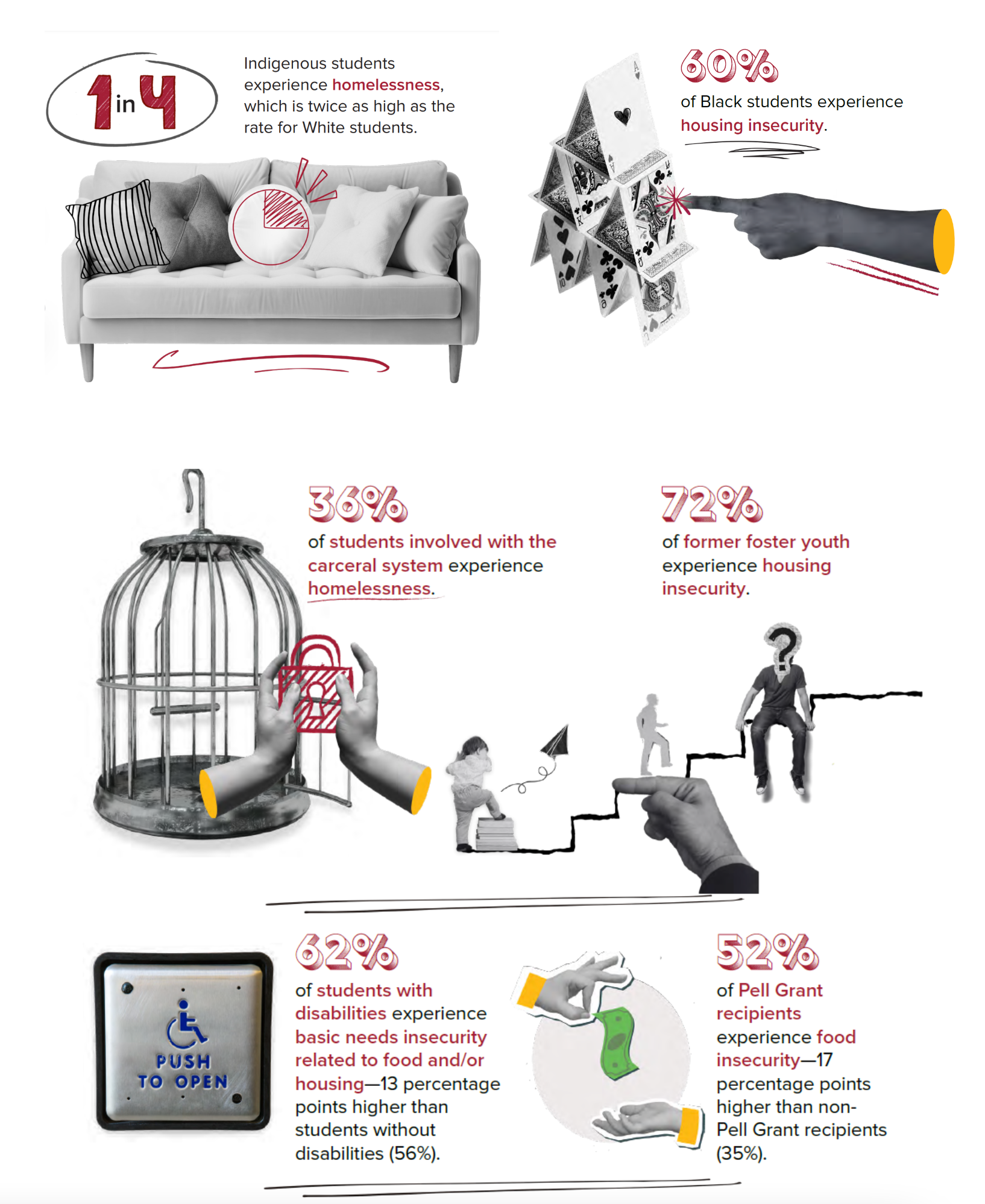The Hope Center has released its 2023-24 student basic needs survey, and the news is grim.

At a time when Pell Grant funding is being threatened, an astonishing 52% of Pell Grant recipients already experience food insecurity. As the authors write, " ...basic needs insecurity is particularly prevalent among students with structurally marginalized identities and those who have the greatest trouble accessing and affording higher education, including: part-time students, Pell Grant recipients, Black and Indigenous students, students with disabilities, former foster youth, and those who have been involved in the carceral system."

The researchers find that most students aren't currently accessing the food, housing, and transportation supports available to them either because they don't know that they're eligible, because accessing resources is cumbersome, or because students aren't currently eligible for some forms of supports.
These are all policy choices. Over and over, advocates for students have asked for more generous financial aid, better funding for support staff who can steer students to resources, wages that pay enough to cover the bills. And over and over, powerful people have denied students all of those things.
And as those safety nets are now likely to be cut even further, students who already struggle to pay the bills and to keep themselves fed will be facing yet deeper structural obstacles to becoming educated. Continuing to praise students for their "resilience" as they struggle against the odds is not serving them well if campuses are not also deeply and visibly invested in advocacy for the supports they need to eat and to sleep in safe places.
We have known for years that so many poor and working-class students never finish college because they cannot afford it. The Hope Center is telling us, once again, of the consequences.
The link between student basic needs security and persistence is unequivocal: 79% of student respondents to our survey who had previously stopped out of college (and subsequently re-enrolled), or were considering stopping out of college, told us it was due to basic needs insecurity (emotional stress/ mental health, lacking money for living expenses, childcare/caregiver responsibilities, lack of transportation, lack of access to internet/technology) or financial reasons (cost of attendance/ insufficient financial aid, cost of textbooks or course materials, unexpected financial expense/ emergency).
We have known this, for decades. And policy makers have done so little, all while promising that education is the solution to deep economic inequalities.




